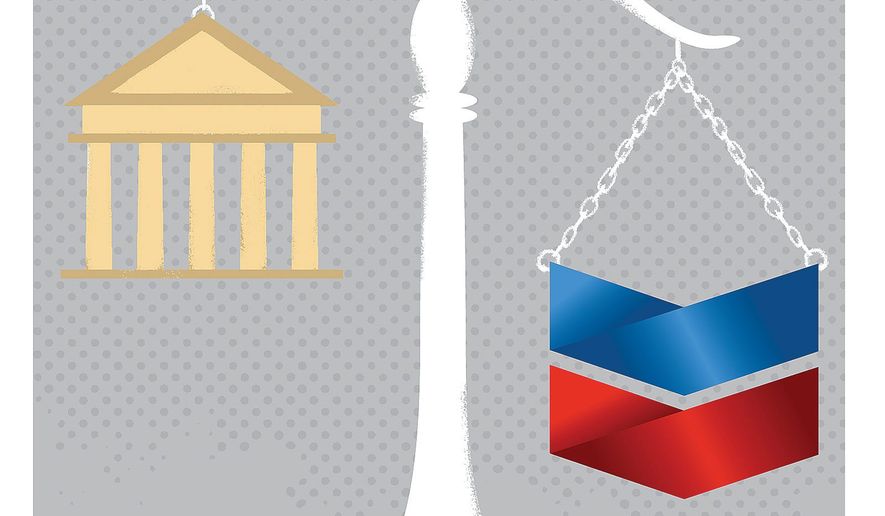Chevron Ruling Overview
The Chevron ruling, issued by the United States Supreme Court in 1984, is a landmark decision that significantly altered the relationship between the judiciary and administrative agencies.
The Chevron ruling established a two-step framework for courts to review agency interpretations of ambiguous statutes. This framework has been applied in cases involving supreme court homelessness , where courts have deferred to agency interpretations of statutes governing the provision of housing and other services to homeless individuals.
The Chevron ruling has thus had a significant impact on the legal landscape surrounding homelessness in the United States.
The case arose when Chevron U.S.A., Inc. challenged the Environmental Protection Agency’s (EPA) interpretation of the Clean Air Act. The Court ruled in favor of the EPA, establishing a two-step test for judicial review of agency interpretations of statutes.
Chevron ruling, a pattern of repeated V-shaped motifs, finds its origins in ancient Scottish tartans. These tartans, symbols of clan identity , featured intricate geometric patterns that conveyed specific meanings and represented different regions. The chevron motif, with its dynamic and bold lines, became a staple in tartan designs, echoing the rugged and independent spirit of the Scottish Highlands.
Key Provisions and Implications
Under the Chevron test, courts must first determine whether Congress has spoken clearly on the issue in question. If so, the court must defer to the agency’s interpretation. If not, the court must then consider whether the agency’s interpretation is reasonable.
Chevron ruling, a legal doctrine that gives deference to agencies’ interpretations of statutes, has faced recent challenges. The Supreme Court’s decision in scotus overturns chevron has cast doubt on the doctrine’s future, potentially limiting the authority of agencies to interpret laws.
The Chevron ruling has had a profound impact on administrative law. It has given agencies greater deference in interpreting statutes, making it more difficult for courts to overturn their decisions.
Significance in Administrative Law, Chevron ruling
The Chevron ruling has been both praised and criticized. Supporters argue that it promotes deference to agencies with expertise in their fields. Critics argue that it gives agencies too much power and reduces the role of the judiciary in ensuring that agencies act within their authority.
Chevron Ruling in Practice

The Chevron ruling has been applied in numerous cases, shaping the legal landscape of administrative law. Courts have used the two-step framework to determine the deference owed to agency interpretations.
One notable example is the case of Chevron U.S.A., Inc. v. Natural Resources Defense Council, Inc. (1984). In this case, the Supreme Court held that the Environmental Protection Agency’s (EPA) interpretation of the Clean Air Act was entitled to deference under Chevron.
Factors Considered
When applying the Chevron ruling, courts consider several factors, including:
- The clarity of the statute
- The agency’s expertise in the relevant field
- The consistency of the agency’s interpretation
- The persuasiveness of the agency’s reasoning
Challenges and Limitations
Despite its widespread application, the Chevron ruling has also faced challenges and limitations:
- Judicial Overreach: Critics argue that Chevron grants excessive deference to agencies, potentially undermining the role of the judiciary in interpreting the law.
- Lack of Clarity: The Chevron framework can be difficult to apply in practice, leading to inconsistent outcomes and uncertainty in the law.
- Political Influence: Some argue that Chevron allows agencies to be unduly influenced by political considerations, rather than adhering to the intent of the law.
Chevron Ruling Impact and Implications
The Chevron ruling has had a significant impact on regulatory agencies, businesses, and industries. It has given agencies more power to interpret statutes and has made it more difficult for businesses to challenge agency decisions. This has led to concerns about the potential for regulatory overreach and has made it more important for businesses to be involved in the regulatory process.
Impact on Regulatory Agencies
The Chevron ruling has given regulatory agencies more power to interpret statutes. This is because the Court held that courts must defer to an agency’s interpretation of a statute if it is reasonable. This has made it more difficult for businesses to challenge agency decisions, as they must now show that the agency’s interpretation is not reasonable.
Impact on Businesses and Industries
The Chevron ruling has also had a significant impact on businesses and industries. This is because it has made it more difficult for businesses to challenge agency decisions. This has led to concerns about the potential for regulatory overreach and has made it more important for businesses to be involved in the regulatory process.
Ongoing Debates and Controversies
The Chevron ruling has been the subject of ongoing debates and controversies. Some critics argue that the ruling gives too much power to regulatory agencies and that it makes it too difficult for businesses to challenge agency decisions. Others argue that the ruling is necessary to ensure that agencies have the flexibility to interpret statutes in a way that is consistent with their expertise.
Chevron ruling is a type of textile pattern characterized by a series of V-shaped motifs. It is often associated with tartan patterns , which are typically made up of intersecting lines that form a plaid design. The chevron ruling technique can be used to create a variety of different effects, from subtle to bold.
It is a versatile technique that can be used to create both traditional and contemporary designs.
Chevron ruling is a doctrine in administrative law that gives great deference to the interpretation of a statute by the agency responsible for administering it. For more information on chevron ruling, see chevron ruling explained. Chevron ruling is based on the idea that the agency has expertise in the area of law that it administers, and that it is therefore best equipped to interpret the statute in a way that is consistent with its purpose.
